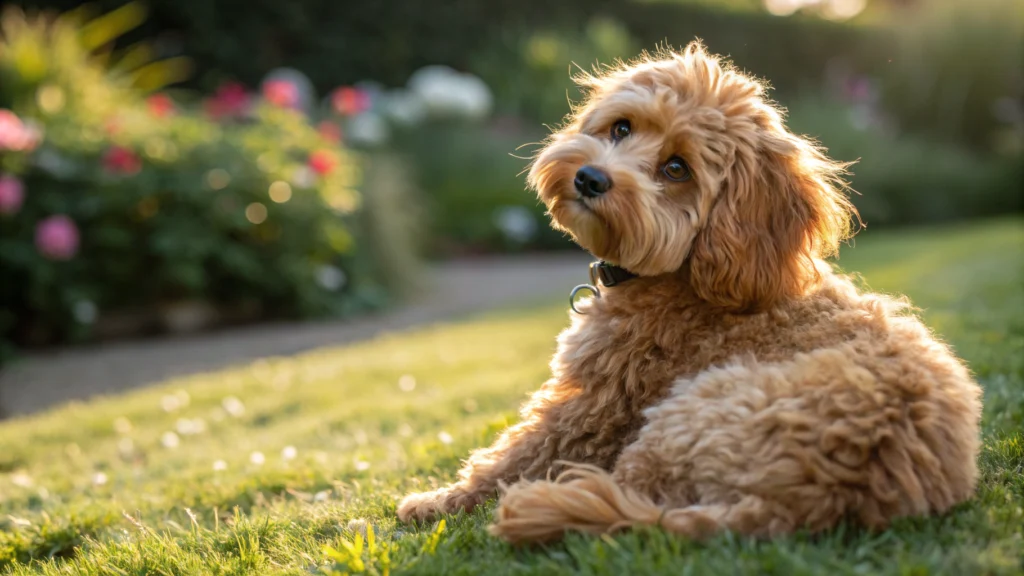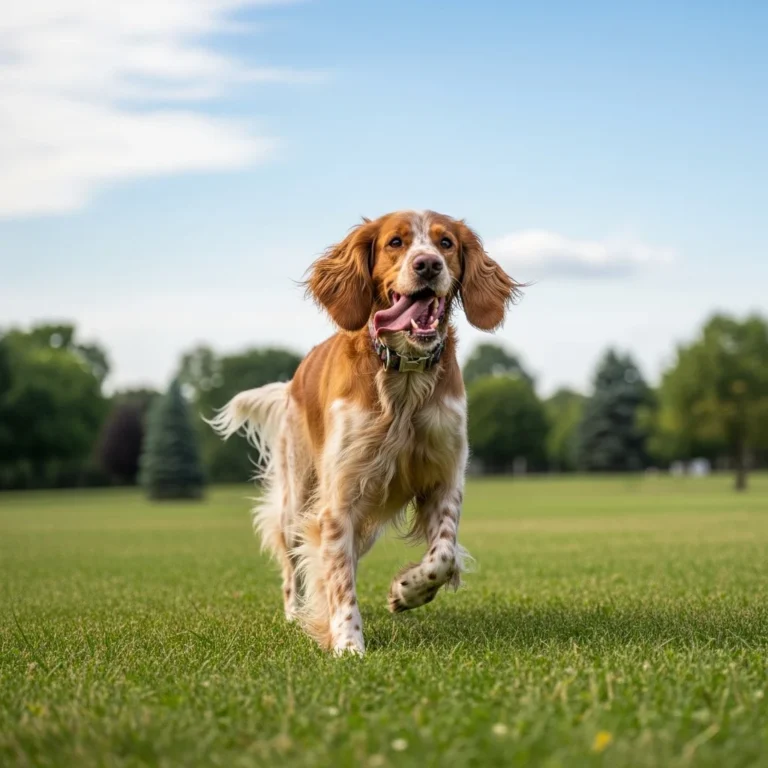
llewellin setter
Hey there, fellow dog lover! Have you ever been out on a hike and seen a dog that just took your breath away? I’m talking about a canine with a sleek, speckled coat flowing in the wind, moving with this unbelievable grace, and with eyes that just sparkle with intelligence and joy? That, my friend, was probably a Llewellin Setter. I still remember the first time I met one – my boy, Remington – and it was a complete “love at first sight” moment. He wasn’t just a dog; he was a bundle of elegant energy and unwavering loyalty, ready for any adventure.
These magnificent pups are so much more than just a pretty face. They carry a rich history, a purpose deeply rooted in the world of bird hunting, and a heart that’s just made for companionship. But here’s the secret I learned: even if you’ve never held a hunting license in your life, their charm is totally undeniable. They bring this incredible blend of elegance and “let’s go!” energy into any home, making them the ultimate sidekick for active families or anyone who loves to explore the great outdoors. So, whether you’re already smitten or just curiously scrolling, let’s dive into the wonderful world of the Llewellin Setter together – trust me, you’re in for a real treat!
Understanding the Llewellin Setter: Basics & Characteristics
What is a Llewellin Setter?
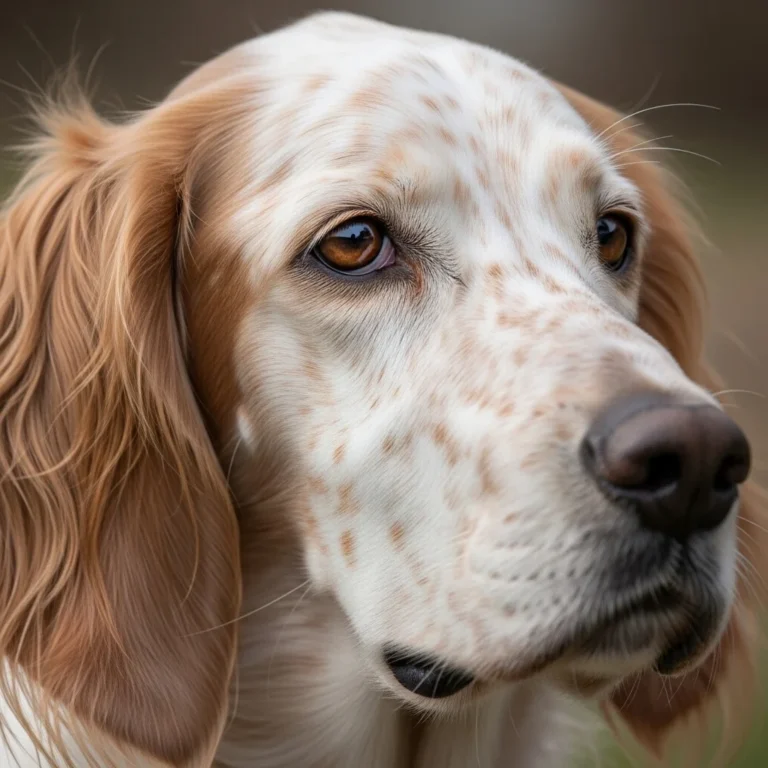
Okay, let’s start with the basics. Picture this: a dog with a sleek, flowing coat, often looking like it’s been delicately speckled by an artist, with eyes that just twinkle with curiosity and smarts. That’s your Llewellin Setter! At its heart, a Llewellin is a specific, top-tier strain of the English Setter, meticulously bred for its absolute superstar abilities in the field. Think of it like finding a naturally gifted Olympic athlete within a family of already-sporty siblings. These dogs were developed to be the crème de la crème of bird dogs, famous for their amazing noses, endless stamina, and a hunting style that’s just pure poetry in motion.
But here’s the best part – they’re not all work and no play! The moment they come home and wipe their paws (well, in a perfect world!), they transform into the most affectionate, gentle couch cuddlers who absolutely adore their families. This amazing dual nature – a fierce and focused hunter outside and a loving, velcro-style best friend inside – is honestly one of their most magical traits.
How does a Llewellin Setter differ from an English Setter(llewellin english setter)?
Ooh, this is a great question, and it’s one that pops up all the time in dog park conversations! Let me break it down for you in a super simple way: all Llewellin Setters are English Setters, but not all English Setters are Llewellin Setters. I know, it sounds a little like a riddle, right?
Think of it this way: The llewellin setter dog is a specific, carefully maintained bloodline within the broader English Setter family tree. It all started with a few key dogs in the English Setter world, primarily those bred by a passionate guy named Richard Purcell Llewellin way back in the day. His mission was super focused: to create the ultimate, unbeatable bird dog. He did this by being incredibly picky, only breeding dogs that showed the very best hunting instincts, intelligence, and that perfect, athletic build for running all day.
So, while they share the same gorgeous looks and core personality as any English Setter, Llewellins are often known for their slightly more refined, athletic build and a particularly strong, “built-in” prey drive that’s been honed over generations. While many wonderful English Setters are bred for the show ring or as amazing family companions, Llewellins are almost always bred with their hunting superstar status as the top priority. It’s like comparing a custom-built racing bike (that’s your Llewellin) to a fantastic, all-around, top-of-the-line commuter bike (your English Setter) – both are absolutely awesome, but they were designed with a slightly different primary goal in mind.
What is the origin and history of the Llewellin Setter?
Alright, history buffs, this one’s for you – and it’s a seriously cool story! The tale of the Llewellin Setter is like a real-life drama set in the rolling hills of 19th-century Britain. Our main character is Richard Purcell Llewellin, a Welsh landowner and a seriously passionate sportsman. This guy wasn’t just casually breeding dogs; he was a man on a mission with a very clear vision.
Back in the mid-1800s, R.P. Llewellin decided he was going to create the perfect gun dog. He believed that by being super selective and only breeding the very best English Setters known for their field performance, he could create a bloodline that was simply unmatched. He was like a master chef, carefully mixing and matching bloodlines, primarily using dogs from the “Laverack” Setter strain (shout out to Edward Laverack!) and other proven field champions.
His rockstar founding dogs were “Dash II” and “Laverack’s Countess.” Through years and years of crazy-dedicated and precise breeding, Llewellin successfully created a distinct line that consistently produced puppies with unbelievable noses, tireless stamina, brilliant minds, and a gorgeous, efficient way of moving in the field. These dogs became so famous for their skills that people started calling them “Llewellin Setters” to set them apart. Their reputation spread like wildfire, especially to American bird hunters who were all about that proven performance. And the rest, as they say, is history!
What are the typical physical characteristics of a Llewellin Setter (size, weight, coat colors)?
When you look at a Llewellin Setter, the words “graceful athlete” should immediately come to mind. They are stunningly beautiful dogs, but every bit of that beauty is built for speed and endurance in the field.
- Size and Weight: Generally, Llewellins are a medium-sized package of muscle. Males usually stand between 24 and 26 inches at the shoulder and weigh in anywhere from a fit 50 to a sturdy 80 pounds. The ladies are typically a bit more petite, standing 23 to 25 inches tall and weighing a sleek 40 to 60 pounds. They have this lean, “I-work-out” kind of build that totally gives away their active lifestyle.
- Coat: Oh, the coat! It’s definitely one of their head-turning features. It’s flat and silky-soft, with these gorgeous, long feathers on the back of their legs, their tail, and their belly. It looks fabulously high-maintenance, but it’s actually pretty practical, offering a bit of protection from brambles and weather.
- Coat Colors: This is where they get their signature look! Llewellins come in a variety of stunning, speckled patterns, often described with the fancy term “Belton.” You’ll most commonly see:
- Blue Belton: A white canvas with chic black speckles or “ticking.”
- Orange Belton: White with vibrant orange speckles.
- Lemon Belton: White with soft, lemon-yellow speckles.
- Liver Belton: White with rich, liver-brown speckles.
- And sometimes, you might even spot a tri-colored beauty, which combines two of these Belton patterns with some solid patches. The overall effect is a soft, dappled look that is completely unique to them.
What is the average lifespan of a Llewellin Setter?
We all want our furry best friends to stay with us as long as possible, right? The great news is that Llewellin Setters, when given lots of love, a great diet, and plenty of exercise, are generally a healthy and robust bunch. You can typically expect your adventure buddy to be by your side for 10 to 12 wonderful years, and it’s not unheard of for some to be zooming around well into their 13th or even 14th year! Genetics always play a part, but nothing beats proactive vet care and a happy home for adding extra years to their lives.
Temperament & Personality
What is the typical temperament of a Llewellin Setter?
If you’re dreaming of a dog that’s a true partner in crime for every adventure, and a total cuddle bug during quiet nights in, you’ve just found your soulmate in the Llewellin Setter. Their personality is this perfect, beautiful blend of enthusiastic athlete and devoted family member.
In a nutshell, they are:
- Brilliant and Eager to Please: This makes training them an actual joy. They learn new stuff at lightning speed and their main goal in life is to make you happy. What’s not to love?
- Affectionate and Super Loyal: Llewellins form these incredibly strong, heartwarming bonds with their families. They need to be where you are, whether that’s on the trail or on the sofa. They are the definition of a “velcro dog” in the best way possible.
- Energetic and Playful: Don’t let their calm, elegant indoor vibe trick you – these dogs have a hidden engine that just doesn’t quit! They need a good dose of physical and mental fun every single day to be their best selves. A bored Llewellin might just decide to redecorate your house with your favorite shoes.
- Gentle and Sensitive Souls: They have the biggest hearts and respond best to positive, happy training. A harsh word can really hurt their feelings, so kindness and consistency are key.
- Curious and Always Observant: They live to explore and notice everything. Combined with that strong prey drive, it means their “on switch” is always ready to go when they’re outside.
Are Llewellin Setters good family dogs?
I can answer this with a resounding, tail-wagging “YES!” Seriously, ask any Llewellin owner and watch their face light up. Despite being born and bred for the hunt, Llewellin Setters are absolute rockstars as family companions. Their gentle spirit, combined with their “never leave me out” attitude, makes them a fabulous fit for active households.
They are not the kind of dog who will be happy just being a lawn ornament. They want to be in the thick of family life, involved in everything. Imagine coming home to a wiggly, soft, happy Setter who acts like you’ve been gone for a decade – that’s the Llewellin welcome committee!
But let’s be real: “good family dog” really means a good fit for your specific family’s vibe. If you’re a crew that loves hiking, long walks, playing fetch in the park, or just generally being active, a Llewellin will fit right in. If your idea of a perfect weekend is a marathon on the couch, you might find their energy levels to be a little… overwhelming.
How do Llewellin Setters interact with children and other pets?
This is another area where Llewellins generally get an A+, all thanks to their naturally gentle and patient personality.
- With Kids: Llewellins are often fantastic with children. They tend to be incredibly patient and kind, making them wonderful, forgiving playmates. But – and this is a big but for every single dog breed – supervision is non-negotiable, especially with little ones. It’s so important to teach kids how to interact gently with dogs and to make sure your pup has a quiet place to escape to if they need a break from the chaos.
- With Other Dogs: Most Llewellins think other dogs are the best! They usually love having a canine buddy to play and romp with, and they can do wonderfully in a multi-dog home. Starting socialization early is the secret sauce to making sure they have good puppy manners.
- With Other Pets (Like Cats or Small Furries): Okay, let’s talk about the elephant in the room – their prey drive. This is where you need to be super mindful. While many Llewellins can learn to live peacefully with a cat, especially if they’re raised together from a young age, it’s never a 100% guarantee. That instinct to chase is powerful stuff. For smaller pets like rabbits, hamsters, or pet birds? It’s safest to just keep them completely separate. That innate hunting drive is too strong to risk, and even the most well-behaved Setter might find a scurrying little creature impossible to resist. If you have a cat, you’ll need to do very careful, controlled introductions and always, always keep an eye on them.
Are they prone to any specific behavioral issues?
Llewellin Setters are generally the goodest of good dogs, but like any purebred, they can develop some not-so-great habits if their needs aren’t met or if they don’t get the right training. It’s not that they’re troublemakers by nature; it’s more that these are the common hiccups that can pop up if an owner isn’t ready for their specific brand of awesome.
Here’s what to watch out for:
- Separation Anxiety: Because they bond so deeply and love being with their people, Llewellins can get really stressed if left alone for too long. This might look like chewing your favorite pillow, barking non-stop, or having accidents indoors.
- Destructive Chewing: As puppies, or if they’re bored, a Llewellin might decide your furniture is a chew toy. This is usually their way of saying, “Hey! I need more to do!”
- A Little Too Vocal: Some Llewellins can be chatty, barking at squirrels, the mailman, or just because they’re bored. Consistent training can help keep the noise level down.
- The “Zoomies” (a.k.a. Prey-Driven Bolting): This is a big one. Their prey drive is so strong that if they see a squirrel or catch a scent, they can be gone in a flash, completely forgetting their name and your voice. This is why a secure yard and rock-solid recall training are an absolute must.
- Shyness or Sensitivity: While usually super friendly, a Llewellin that isn’t properly socialized can become shy or nervous in new situations.
The golden ticket to avoiding almost all of these issues? It’s simple: early socialization, consistent positive training, and making sure they get enough physical and mental wiggles out every single day.
Care & Maintenance
What are the exercise requirements for a Llewellin Setter?
Let me be totally straight with you here: Llewellin Setters are not the dog for a couch potato lifestyle. They are canine athletes, born and bred, with energy for days. This means their exercise needs are no joke.
My motto is: a tired Llewellin is a happy (and well-behaved) Llewellin!
- Daily Dose of Fun: They need a solid 1 to 2 hours of real, heart-pumping exercise every. single. day. I’m not talking about a slow walk to smell the roses (though they love that too!). We’re talking about brisk walks, jogs, runs, intense games of fetch, or the holy grail – off-leash running in a safe, fenced area where they can really open up.
- Brain Games: On top of physical workouts, their clever brains need a challenge! Puzzle toys, training sessions that teach new tricks, and fun scent games are all amazing ways to tire them out mentally.
- Field Work (If You’re Into It): If you’re a hunter, taking your Llewellin out into the field is the ultimate fulfillment for them. It’s what they were born to do, and it checks every single box for their physical and mental needs.
Expert Advice: As Dr. Sarah Hodgson, a superstar canine behaviorist, always says, “A tired dog is a good dog, especially for high-energy breeds like the Llewellin Setter. Neglecting their exercise needs is a sure path to behavioral challenges.”
If they don’t get enough exercise, a Llewellin will find their own ways to burn off that steam, and I can promise you, you won’t be a fan of their creative choices!
How much grooming does a Llewellin Setter require?
You’d think with that gorgeous, flowing coat they’d be super high-maintenance, but grooming a Llewellin is actually pretty manageable if you make it a regular habit. It’s all about consistency!
- Brushing: Plan on brushing them 2-3 times a week to prevent tangles, mats, and to control the shedding. You’ll want to pay extra attention to those beautiful feathers on their legs, tail, and belly, as they love to collect knots. A slicker brush and a sturdy comb will be your new best friends. Regular brushing also keeps their coat shiny and healthy.
- Bathing: Bathe them as needed – usually every 4-6 weeks, or whenever they decide to have a super fun roll in something stinky. A good dog shampoo and conditioner will keep that coat looking influencer-ready.
- Ear TLC: Those long, floppy ears are adorable, but they can trap moisture and gunk, leading to infections. Make it a habit to check and gently clean their ears once a week with a vet-approved cleaner. Keep an eye out for any redness or funky smells.
- Nail Trims: A quick nail trim every 3-4 weeks is perfect. If you hear them clicking on your floor, it’s time for a pedicure!
- Teeth Brushing: Just like us, they need dental care! Try to brush their teeth a few times a week to keep those pearly whites healthy and their breath… well, as fresh as dog breath can be.
What is the best diet for a Llewellin Setter?
Feeding your Llewellin Setter a top-notch, balanced diet is one of the most important things you can do for their health and happiness. These active pups need fuel for their adventures!
- High-Quality Kibble: Go for a premium commercial dog food that has a real, named meat (like chicken, salmon, or lamb) as the very first ingredient. Formulas made for active, medium-to-large breeds are usually a perfect fit.
- Protein and Fat are Fuel: Active dogs like Llewellins do best with a diet that’s rich in quality protein to support all those muscles, and healthy fats for all-day energy.
- Watch the Portions: Follow the guidelines on the bag, but remember, every dog is different! Adjust based on your own dog’s activity level, age, and metabolism. Your vet is a great resource for figuring out the perfect amount. We want them lean and athletic, not chunky!
- Age-Appropriate Food: llewellin setter puppies, adults, and seniors all have different nutritional needs. Make sure you’re feeding the right formula for their life stage.
- Treats in Moderation: It’s so hard to resist those sweet eyes, but too many treats can lead to weight gain. Keep them healthy and sparing!
- Fresh Water, Always: Make sure there’s always a full, clean bowl of water available, especially after all that exercise.
Expert Advice: Dr. Anna Rodriguez, a veterinary nutritionist, advises, “For active breeds like the Llewellin Setter, consistency in diet and careful monitoring of body condition are paramount. A lean, athletic build is ideal, not a heavy one, for optimal joint health and performance.”
related: Bland Diet for Dogs with Diarrhea or Colitis & pancreatitis
Are Llewellin Setters high-shedding dogs?
Let’s be real here: yes, Llewellin Setters are definitely shedders. I’d call it a moderate to high level of shedding. You will find their beautiful hair on your clothes, your furniture, and probably in your coffee. It’s just part of the package!
They have a double coat (a soft undercoat and a sleeker outer coat), which means they “blow” their coat especially hard twice a year during seasonal changes. Regular brushing is your absolute best weapon in the fight against fur. It catches all that loose hair before it becomes a part of your home decor. So, if you’re thinking of welcoming a Llewellin into your life, it’s time to become best friends with your vacuum and your brush!
Training & Intelligence
Are Llewellin Setters easy to train?
I get this question all the time! The short answer is: yes, generally, Llewellin Setters are a dream to train, especially if you’re an experienced dog owner or someone who’s committed to using positive, fun methods.
Why are they such star students?
- They’re Super Smart: These pups are clever and learn new commands at lightning speed.
- They Want to Make You Happy: Llewellins live to please their people, which is a massive motivator during training sessions.
- They Have Amazing Focus: When they’re engaged in something they enjoy, they have an intense, laser-like focus.
But a little warning: “easy” doesn’t mean “effortless.” Their intelligence also means they get bored easily if training is repetitive or dull. They need you to be consistent and engaging. And that famous prey drive? It means they might have perfect recall in your living room, but the second they see a squirrel outside, all bets are off. Which is a perfect segue…
What kind of training is best suited for a Llewellin Setter?
Given their brilliant minds, sensitive hearts, and powerful instincts, some training methods just work better than others for a Llewellin.
- Positive Reinforcement is EVERYTHING: This is non-negotiable. Llewellins shine with reward-based training (think: yummy treats, happy praise, a favorite toy). Harsh methods will break their spirit and your bond.
- Early Socialization is Key: From the moment you bring your puppy home, expose them to all the world has to offer – different people, sounds, places, and friendly dogs. Puppy kindergarten classes are a fantastic way to start!
- Obedience Training 101: Basic commands like sit, stay, come, and down are the foundation for a well-behaved dog. Keep sessions short, fun, and positive.
- Leash Manners: Start this early! A Llewellin that walks nicely on a leash is a joy; one that pulls constantly is a nightmare.
- Recall is CRUCIAL: This is, without a doubt, the most important thing you will ever teach your Llewellin. A reliable “come” command, practiced in a million different places, could save their life one day. Always use a long-line leash in unsecured areas until you are 1,000% confident.
- Channel Their Instincts: If you can, getting into scent work, tracking, or actual bird dog training is like giving them the keys to paradise. It fulfills their soul like nothing else.
- Patience and Consistency: These are your secret weapons. Be patient, be clear, and be consistent with your rules.
Are they intelligent dogs?
Oh my gosh, YES! Llewellin Setters are scarily intelligent. This isn’t just me being a proud dog mom; it’s a well-known trait that comes from their history as thinking-man’s hunting dogs.
You’ll see their intelligence in so many ways:
- Problem-Solving Pros: They can figure out how to open gates, get into treat jars, and outsmart you on a regular basis.
- Quick Studies: They learn new tricks and routines crazy fast.
- They Watch and Learn: They are always observing you and learning from your habits.
- They Adapt: While they love a good routine, they’re also smart enough to adapt to new situations once they feel safe.
But a smart dog is a double-edged sword: it makes them amazing partners, but it also means they need their brains worked just as hard as their bodies. A bored Llewellin is a Llewellin who will invent their own (usually destructive) games!
Do they have a strong prey drive?
Is the sky blue? A powerful prey drive is literally in their DNA. It’s not a bug; it’s a feature! This is exactly what they were bred for, and it’s what makes them so spectacular in the field.
What does this look like in everyday life?
- Their Nose is in Charge: Their sense of smell is incredible. A whiff of a squirrel or bird can trigger an immediate, single-minded focus to find it.
- The Chase is On: If something small and furry darts past, their instinct is to give chase. This is why that recall training is so, so important.
- The Famous Point: In the field, this drive is channeled into a beautiful “point” – they freeze like a statue to show the hunter where the bird is. It’s incredible to watch.
This prey drive is what makes them phenomenal hunting partners, but it also means you, as an owner, need to be extra vigilant about training and safety. It’s an instinct you can manage and direct, but you’ll never be able to train it out of them – and you wouldn’t want to!
Health & Wellness
What are common health problems or genetic conditions in Llewellin Setters?
The good news is that Llewellin Setters are generally a pretty healthy and hardy bunch, especially when they come from responsible breeders who do all the right health testing. But like any purebred, there are a few conditions to have on your radar.
Some things to be aware of include:
- Hip Dysplasia: This is a hereditary thing where the hip joint doesn’t fit together quite right, which can lead to arthritis. Good breeders will have their dogs’ hips certified by the Orthopedic Foundation for Animals (OFA).
- Elbow Dysplasia: Similar to hip dysplasia, but in the elbow joint.
- Progressive Retinal Atrophy (PRA): A group of diseases that cause the retina to degenerate over time, leading to blindness. Reputable breeders test for this.
- Hypothyroidism: This is when the thyroid gland is underactive, which can cause weight gain and low energy. It’s easily managed with daily medication.
- Deafness: Some setters, especially mostly white ones, can be prone to deafness. Breeders often test puppies for this.
- Bloat (GDV): This is a scary, life-threatening emergency where the stomach fills with gas and twists. It’s more common in deep-chested breeds like Setters. Knowing the signs (a distended belly, unproductive vomiting, restlessness) and getting to the vet immediately is critical.
- Allergies: Yep, they can get allergies just like us, which might show up as itchy skin or ear infections.
When you’re looking for a puppy, always, always ask the breeder for proof of health clearances for the parents. It’s the #1 sign of a breeder who truly cares.
What vaccinations do Llewellin Setters typically need?
Keeping your Llewellin’s shots up-to-date is a basic but super important part of being a great pet parent. It protects them from all sorts of nasty diseases. Your vet will give you the perfect schedule, but here’s the general idea.
Core Vaccinations (The must-haves for every dog):
- DHPP (or DAPP): This covers Distemper, Hepatitis, Parvovirus, and Parainfluenza. Puppies get a series of these, and adults get boosters.
- Rabies: This is required by law. Puppies get one, then boosters every 1-3 years.
Non-Core Vaccinations (Based on your dog’s lifestyle and where you live):
- Leptospirosis: Really important for outdoor adventurers, as it’s in water and soil.
- Bordetella (Kennel Cough): A good idea if your dog goes to daycare, the groomer, or dog parks.
- Lyme Disease: Important if you live in a tick-prone area.
- Canine Influenza: Might be recommended if there’s an outbreak in your area.
Expert Advice: Dr. Michael Green, a vet I’ve trusted for years, always says, “Never skip your puppy’s vaccination series. It’s their primary defense against common, often fatal, diseases. And always discuss your dog’s lifestyle with your vet so they can tailor a vaccination protocol that offers the best protection.”
Talk to your vet! They’ll make a perfect, personalized plan for your pup.
How often should a Llewellin Setter visit the vet?
Regular vet check-ups are like taking your car in for an oil change – they help catch little problems before they become big, expensive ones! Here’s a general timeline:
- Puppyhood (First Year): You’ll be at the vet a lot! It’s for vaccines, check-ups, and general puppy advice. Plan on going every 3-4 weeks.
- Adulthood (1-7 years): For a healthy adult, an annual wellness exam is perfect. The vet will do a full physical, update any shots, and chat with you about food, prevention, and anything else on your mind.
- Senior Years (7-8+ years): As our best friends get older, I recommend going every six months. This helps catch age-related stuff like arthritis or dental issues early, so we can keep them comfortable and happy for longer.
And of course, if anything seems off at any time, don’t wait – make that appointment!
Ownership & Lifestyle
Is a Llewellin Setter a good choice for first-time dog owners?
This is such an important question! While Llewellins are sweet, smart, and eager to please, I have to be honest – they might be a little challenging for a brand new, first-time dog owner who isn’t fully prepared for what they’re signing up for.
Here’s my real-talk reasoning:
- They Need SO Much Exercise: Their energy levels are no joke. A new owner might not realize that a simple walk isn’t enough and that a bored, under-exercised dog is a destructive dog.
- That Prey Drive is Real: Managing a dog with such a strong instinct to chase takes consistent training and constant vigilance, which can be overwhelming for a novice.
- Grooming is a Commitment: It’s not extreme, but it’s a regular task that a first-timer might not be ready for.
- Smart Dogs Can Be Sneaky: Their intelligence is amazing, but it also means they’ll get into trouble if they’re bored.
Now, I’m not saying it’s impossible! If a first-time owner is:
- Super dedicated to learning and training.
- Super active and loves the outdoors.
- Willing to invest in puppy classes and lots of time.
- Patient and consistent.
…then, yes, it could work! But for someone wanting a low-key, easy-going first dog, a Llewellin might be a bit too much to handle.
Do Llewellin Setters do well in apartments or urban environments?
I’ll be straight with you: Llewellin Setters are not the best fit for apartment life or super dense cities, unless their owner is an absolute rockstar about making sure all their needs are met outside of the apartment.
Here’s the deal:
- They Need Space: They are active, medium-to-large dogs who like to stretch their legs. An apartment can feel pretty cramped.
- City Life is Overstimulating: All the noises, smells, and people can be a lot for a sensitive dog with sharp senses.
- The Exercise Problem is Bigger: The biggest issue is exercise. In an apartment, every single potty break and play session requires a trip outside. Finding a safe, big, open space for them to really run in a city is a major challenge.
A Llewellin might cope in an apartment, but they won’t be living their best life unless their owner is a total pro at taking them to parks and open spaces for hours of vigorous fun every single day. A house with a yard in the suburbs or country is really their happy place.
What kind of environment is ideal for a Llewellin Setter?
To see a dog breed llewellin setter truly bloom, you want to create their own personal paradise. Imagine the perfect home for an adventure-loving, family-oriented athlete.
The dream setup for a Llewellin includes:
- A Secure, Fenced Yard: This is pretty much essential. A big, safe yard (with a 6-foot fence, because they can jump!) gives them a place to zoom around and play safely.
- Access to Wide-Open Spaces: Even with a yard, they need regular trips to places where they can run free – think hiking trails, dog parks, or fields.
- An Active Family: This is a must. An owner or family who sees a long hike or a run as a fun weekend activity is a perfect match.
- They’re Indoor Family Members: They need to live with you, as part of the family. They wilt if left alone in a kennel or backyard.
- Lots of Mental Games: An environment that offers puzzle toys, training, and new experiences keeps their brilliant mind sharp.
- A Consistent Routine: They feel safest when they know what to expect each day.
Basically, a home where they can be a treasured indoor companion and a frequent outdoor explorer is the ultimate Llewellin heaven.
Where can I find a reputable Llewellin Setter breeder?
Finding a good breeder is the single most important step in your Llewellin journey. A responsible breeder is your partner, dedicated to the health and happiness of their puppies.
Here’s my step-by-step guide:
- Start with Breed Clubs: The English Setter Association of America (ESAA) is a fantastic resource. Also look for field trial clubs, as they often specialize in Llewellins.
- Go to Events: Attend dog shows or, even better, field trials! This lets you see the dogs work, meet breeders in person, and ask tons of questions.
- Get Personal Recommendations: Talk to other Llewellin owners, your vet, or local trainers. Word-of-mouth is gold.
- Do Your Homework & INTERVIEW Them: A great breeder will:
- Be a wealth of knowledge about the breed.
- Be open and honest.
- Let you visit their home and meet the puppy’s parents.
- Show you health clearances for the parents (OFA hips, eye certs, etc.) – this is non-negotiable.
- Have a contract and a health guarantee.
- Interview YOU to make sure you’re a good fit.
- Not always have puppies available (good ones have waitlists!).
- Offer lifelong support.
- NEVER sell through a pet store.
- Run from Red Flags: Avoid breeders who:
- Can’t provide health clearances.
- Always have multiple litters available.
- Won’t let you visit.
- Seem more interested in your wallet than your home.
- Don’t know the history of their dogs.
A good breeder is worth their weight in gold. Be prepared to wait for the right puppy from the right person – it makes all the difference.
please leave comment
you may like it
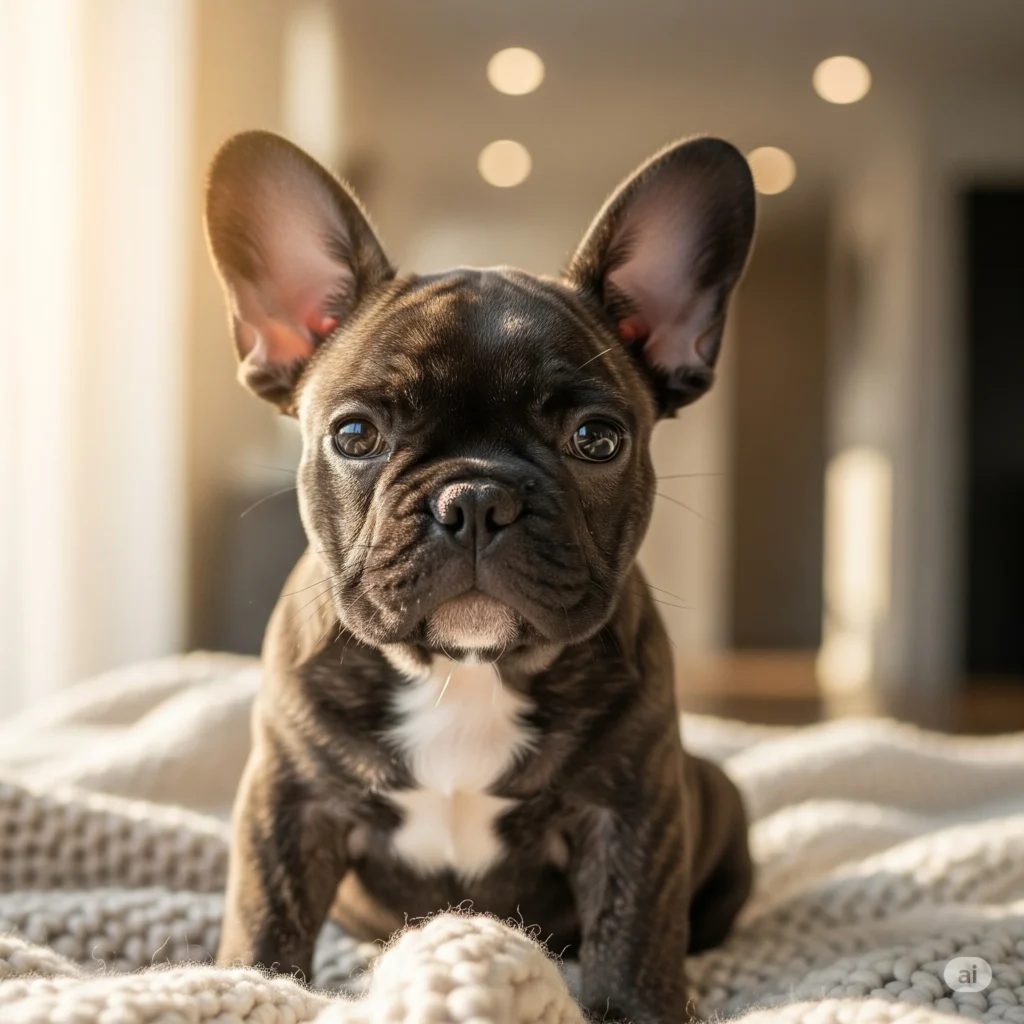
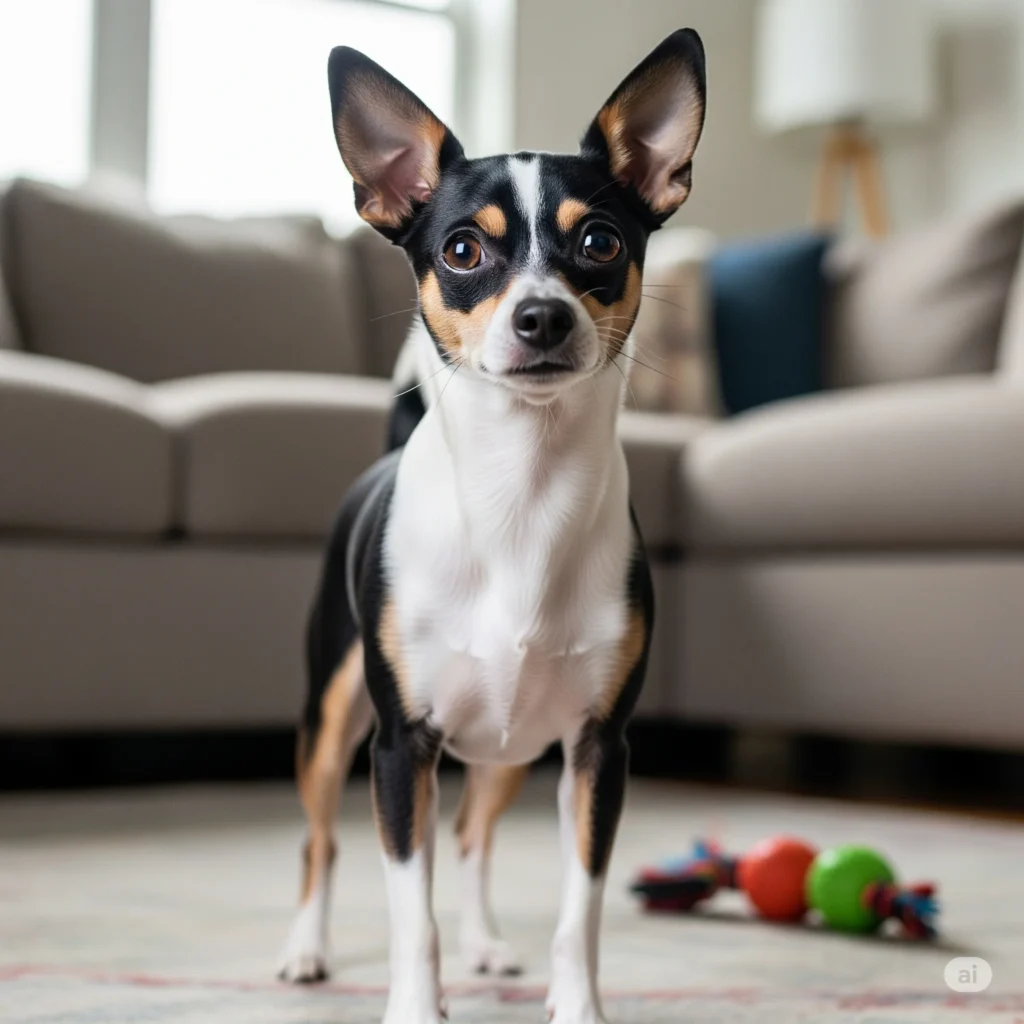
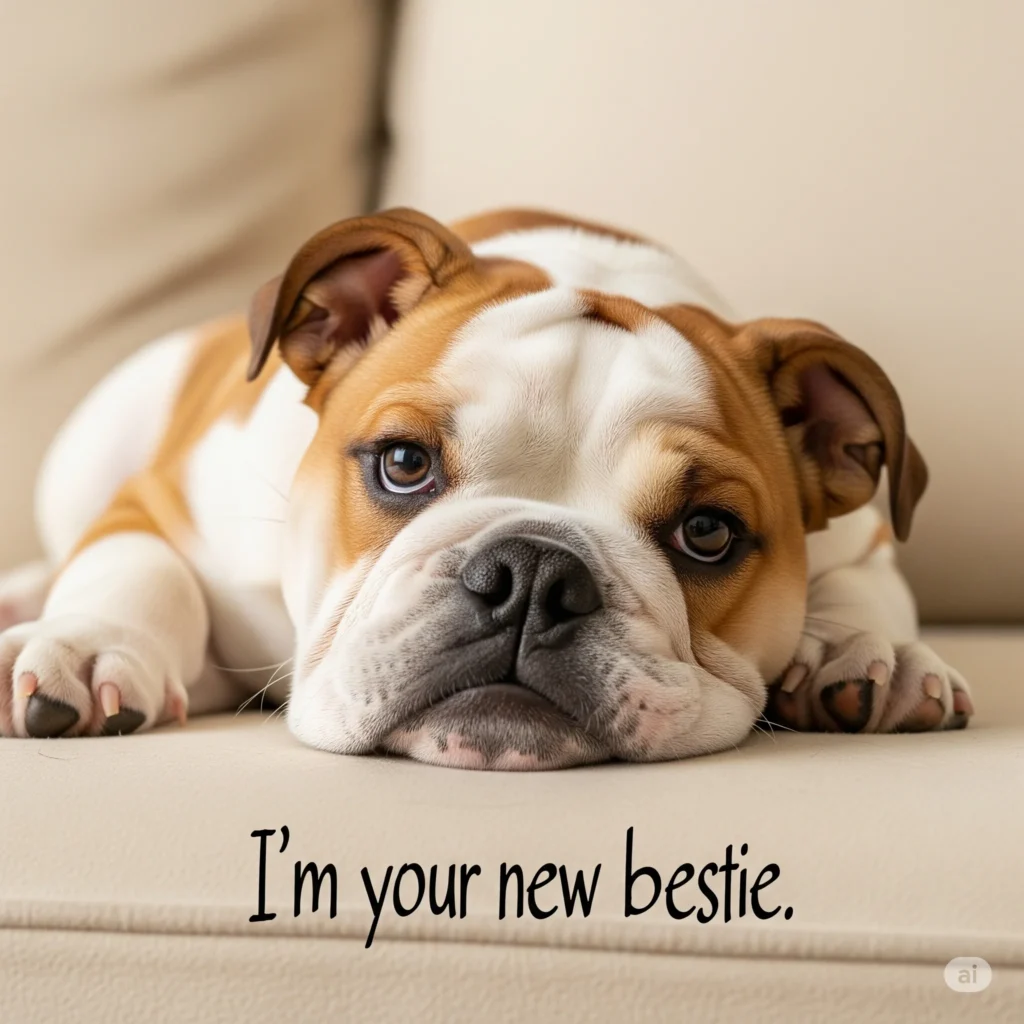

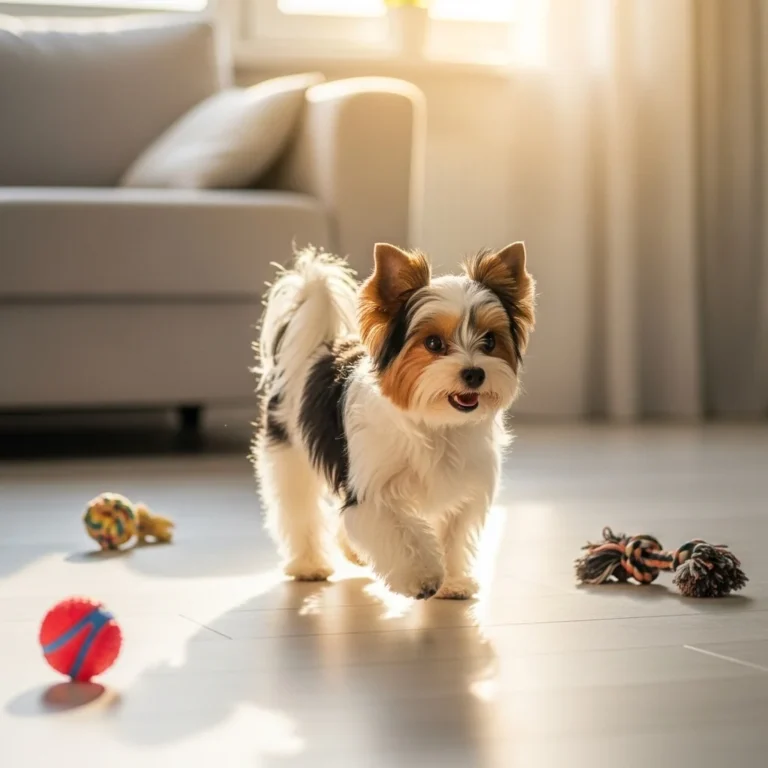
sources
- https://www.llewellin.com/what-is-a-llewellin?
- https://gunner.com/blogs/pack/what-s-the-difference-between-llewellin-setters-english-setters?srsltid=AfmBOorPl7_YWWmCL_8y_rdVuQENbqamNt2zzA5ollgK1FHSxcH8pfw2&https://en.wikipedia.org/wiki/English_Setter?
- https://wagwalking.com/breed/llewellin-setter?
- https://reddit.com/r/EnglishSetter/comments/1c59xrc/what_makes_an_english_setter_a_llewellyn/?https://projectupland.com/dogs/llewellin-setter-dog-breed-profile/?
- https://projectupland.com/hunting-dogs/llewellin-setter/?
- https://ckcusa.com/breeds/llewellin-setter/?
- https://wisdompanel.com/en-us/dog-breeds/llewellin-setter?
- https://gundogmag.com/editorial/team-player-the-llewellin-setter/175642?
- https://dogbreedinfo.com/llewellinsetter.htm?

